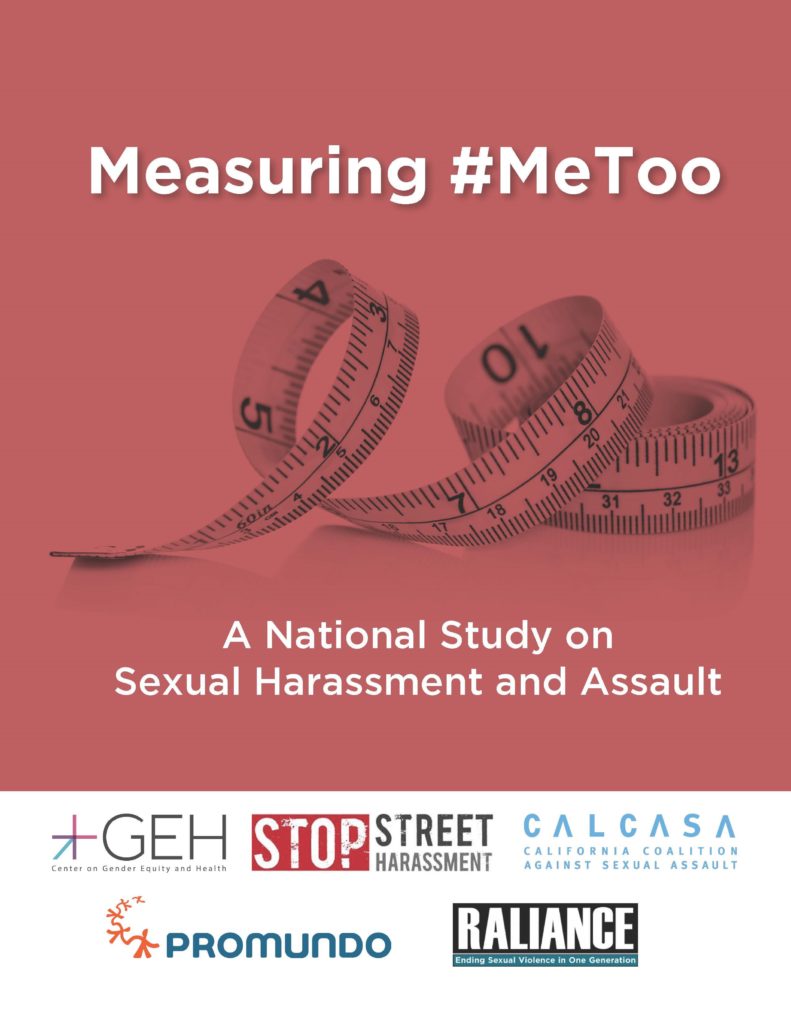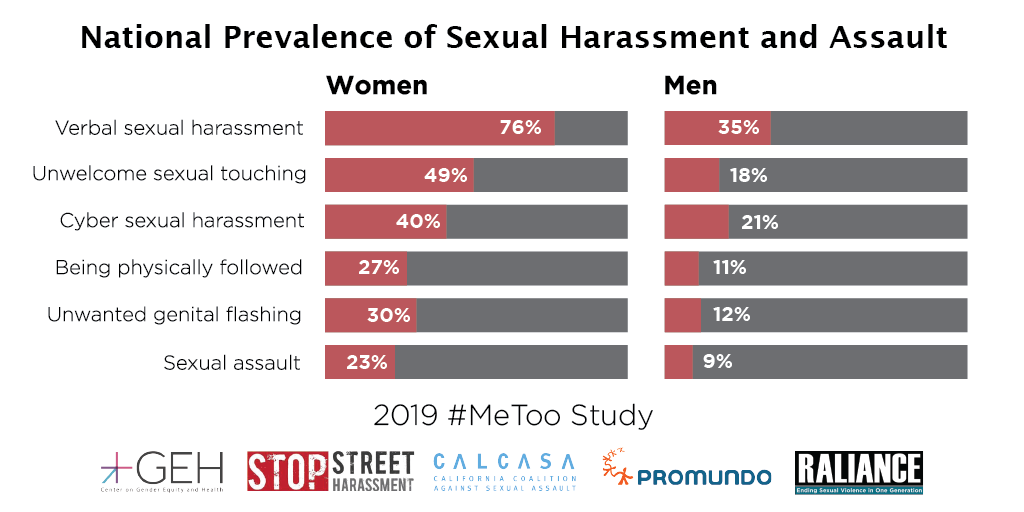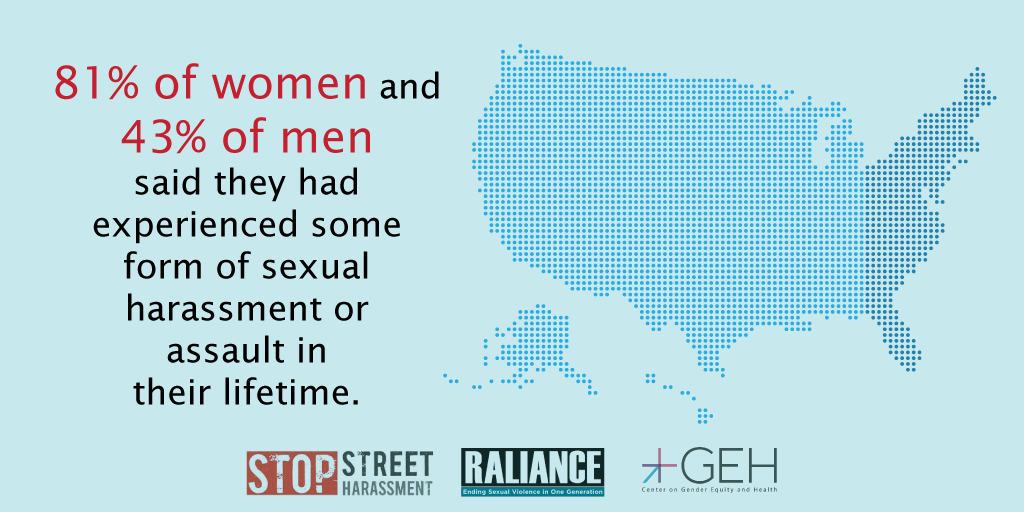 To close out Sexual Assault Awareness Month, on April 30, 2019, SSH, UCSD Center on Gender Equity and Health (GEH), RALIANCE, CALCASA and Promundo released a new joint national study.
To close out Sexual Assault Awareness Month, on April 30, 2019, SSH, UCSD Center on Gender Equity and Health (GEH), RALIANCE, CALCASA and Promundo released a new joint national study.
NORC at the University of Chicago conducted the nationally representative survey of 1,182 women and 1,037 men across February – March 2019. They used the using the AmeriSpeak Panel. UCSD’s GEH did the data analysis.
READ: Full Report | Two-Page Executive Summary | Press Release | Survey Questions | Street Harassment Factsheet
Our findings include:
- 81% of women and 43% of men reported experiencing some form of sexual harassment and/or assault in their lifetime. This graph shows the breakdown of the main categories:

- The most frequently was listed location for sexual harassment is a public space, while most sexual assault takes place in private homes or residences.
- 68% of women and 23% of men experienced sexual harassment at a public place like a street, store, park or restaurant. When you include mass transit and nightlife venues, that statistic rises to 71% women and 28% men. In other words, nearly all women who had experienced sexual harassment and/or assault had experienced it in public spaces (as well as perhaps other locations).
- Sexual harassment and assault cause people, especially women, to feel anxiety or depression and prompt them to change their route or regular routine.
- While experiences of sexual harassment and assault are highly prevalent, accusations of sexual harassment and assault are very rare.
- Most people who said they committed sexual harassment also said they had experienced sexual harassment.
While we repeated a few questions from our 2018 survey, we chose to add new questions around false accusations this year in light of the Kavanaugh hearing and Betsy DeVos’s efforts to change Title IX guidelines.
We broke down differences by demographics and included the findings that were statistically significant. For instance:
- 35% of Black women had experienced sexual harassment in the previous six months.
- 35% of women with disabilities experienced sexual assault in their lifetime.
- 95% of lesbian/bisexual women experienced some form of sexual harassment in their lifetime.
Check out the full report!
Thank you to all of our donors who made this report possible!


 I’m excited to share that our
I’m excited to share that our